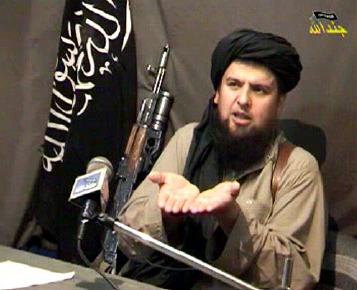
Will the Fergana Valley Become a Hotbed of Destabilization in Central Asia?
Publication: Eurasia Daily Monitor Volume: 9 Issue: 180
By:

The ethnically and culturally complex region of the Fergana Valley is divided among three countries: Kyrgyzstan, Tajikistan and Uzbekistan. The Kyrgyz and the Tajik parts of the Fergana Valley are geographically closer to Uzbekistan than to the capitals of their own countries. Tashkent is only two hours by car from Khujand (the main city in the Tajik part of the valley), while the trip from Khujand to Dushanbe takes about ten hours. From Osh in the Kyrgyz part of Ferghana to Uzbekistan’s border takes only 40 minutes, but travel to the capital Bishkek is ten hours.
“The Fergana Valley is a knot of difficult problems: disputed border territories, interethnic tensions, the activities of Islamic radicals. The valley interlinks three Central Asia countries; a conflict in one part on the valley spreads to the other parts, which belong to neighboring countries. Therefore, stability in the Ferghana Valley determines stability in the whole Central Asia,” believes Dr. Sergey Abashin, the head of the Central Asia Department of the Russian Institute of Ethnology (author’s interview, September 27).
The influence of Islamic radicalism presents one of the most acute problems in the Fergana Valley. Even in Soviet times, an entire network of semi-underground madrassas and mosques was active, operating beyond the control of the communist authorities. In late 1980s, new religious movements were born in the Ferghana Valley, such as the Islamic Movement of Uzbekistan (IMU) and Hizb ut-Tahrir.
The IMU is a militant Islamic group aligned with al Qaeda and the Afghan Taliban, which tries to unite Islamic radicals from all Central Asia countries. At present, Uzbeks, but also Tajiks, Kyrgyz and Kazakhs are members of this organization. The predecessor of IMU is a movement called Adolat (Justice). In 1991, this organization unexpectedly took shape in the city of Namangan, located in the Uzbek part of the valley. Adolat was set up as an imitation of the Iranian Islamic Revolutionary Guards. Young men with green headbands took control of the Namangan overnight and persecute people they judged to be breaking the law (author’s witness account of the 1991 events).
The punishment meted out to thieves and prostitutes was unusual: they were paraded through the town sitting backwards on donkeys; they were tied to posts in public places, where people spat in their faces; they were flogged in the mosques. Crime was quickly wiped out. The people of Namangan still remember how they could leave their cars unlocked and tradesmen could leave their goods out for the night. The undisputed leader of this Islamic militia was the 24-year-old Tahir Yuldashev (Igor Rotar, “Under the Green Banner: Islamic Radicals in Russia and the Former Soviet Union,” Religion, State & Society 30(2), June 2002).
At first, Uzbek President Islam Karimov looked favorably on the activities of Adolat, but soon he realized that he had lost control of Namangan. Adolat activists were arrested and sentenced to long prison terms, but Yuldashev and a few of his followers managed to flee the country. Yuldashev first escaped to Afghanistan, where he established the Islamic Movement of Uzbekistan and after 9/11 joined forces with the Taliban against the US military forces.
As IMU militants continue fighting in Afghanistan today, its activities in Central Asia are minimal, except for Tajikistan. Throughout 2012, Dushanbe has regularly reported about arrests of IMU members in the Tajikistan part of the Ferghana Valley. However, many analysts doubt that they have real connection with the IMU leadership. “There is no IMU branch in Tajikistan now. Maybe there are some remnants of the IMU in Tajikistan, but I am not sure that most of the so-called IMU members have real links with Afghanistan,” said Daniil Kislov, director of the analytical-information agency Ferghana (author’s interview, October 1).
But after the Uzbek–Kyrgyz clashes in southern Kyrgyzstan in 2010, the IMU is likely to increase its activities in this state. Following the clashes, several hundreds Uzbeks from Kyrgyzstan joined militant camps of IMU in Afghanistan (Nezavisimaya Gazeta, September 17, 2010). “Repressions against Uzbeks in southern Kyrgyzstan are continuing. In this situation, Uzbek militants from Afghanistan could return to Kyrgyzstan,” according to Dr. Alexander Knyazev, an Almaty-based coordinator of the Central Asia and Caucasus program at the Russian Institute of Oriental Studies (author’s interview, October 1).
Hizb ut-Tahrir began penetrating the Ferghana Valley in the beginning of the 2000s. Founded in East Jerusalem in 1953 as a political party, Hizb ut-Tahrir seeks to establish a worldwide caliphate. The group promotes ideological extremism, though it does not directly engage in violence. Nevertheless, the security forces in most Central Asian republics have targeted Hizb ut-Tahrir members and many of them are imprisoned in Uzbekistan.
At present, Hizb ut-Tahrir’s primary activity in the Fergana Valley appears to involve the production and distribution of publications, as it continues to operate illegally throughout the valley.
Although the governments of the Central Asian republics are combating Islamic radicals, their policies toward Hizb ut-Tahrir differ significantly. A more liberal approach is evident in Kyrgyzstan, which incites Islamic radicals from the Uzbek part of the valley to move to the Osh area in Kyrgyzstan, where a compact local Uzbek population resides. Uzbekistan’s special services have been reported to occasionally kidnap Uzbek citizens in Kyrgyzstan. "The Uzbek special services act in Kyrgyzstan as if they are at home and do not even bother to consult their actions with Kyrgyz authorities. Usually, Tashkent sends onto our territory Uzbeks who were born in southern Kyrgyzstan, but subsequently obtained Uzbek citizenship and were recruited by the Uzbek special services. From the beginning of the 2000s, about ten Uzbek citizens were kidnaped in Kyrgyzstan," the human rights defender from Osh Arsen Ambaryan claimed (author’s interview, September 29).
The situation in the Tajik part of the valley (in north Tajikistan) is different from that in the Uzbek and Kyrgyz parts. During communism, power control was consistently in the hands of Tajiks from the North (from the Ferghana Valley). Moscow relied on them, because they were more assimilated compared to the rest of the population, due to the fact that the Russian Empire conquered the Ferghana Valley earlier than the rest of Tajikistan.
In May 1992, the opposition made up primarily of mountain Tajiks (natives of Karategin and the Pamir) tried to seize power from the “Northerners” by force of arms. The natives of Leninabad and Kulyab leapt to their own defense. However, even the combatants themselves admit that the civil war was not so much a political struggle as a fight for power between different regional groups of Tajiks, who had not developed into a single nation at the time (EDM, September 13).
Since the opposition used Islamic slogans, the Islamist ideology was not popular in northern Tajikistan during the civil war (1992–1997). But after the civil war, the Kulyab clan took power and the “Northerners” lost their command position in the republic. Under these new conditions, many northern Tajiks have become interested in radical Islamist ideology and from the beginning of the 2000s, northern Tajikistan has started to be the region of activity of Islamic radicals. The Tajikistan branch of Hizb ut-Tahrir was born in the Ferghana Valley and now most Tajik members of this organization are from northern Tajikistan. The Islamists from the North established close contacts with like-minded persons from the Karategin Valley (the stronghold of the Tajik opposition) and with the IMU in Afghanistan, making Islamic radicalism as acute a problem in Tajikistan as it is in neighboring Kyrgyzstan and Uzbekistan (EDM, September 25).
The situation with radical Islam in the Ferghana Valley is likely to worsen when NATO and US forces withdraw from Afghanistan after 2014. At that point, the Central Asia militants, who fought in Afghanistan, are likely to return home to pursue a new agenda. The IMU wants to eliminate Christians and Jews and establish a worldwide Islamic caliphate (see the IMU website, furkon.com). The destabilization of the Ferghana Valley is a good start for the export of Islamic revolution. Increased terrorist activities in the valley could cause destabilization in the Central Asian region and present a danger to Russia, where, as the IMU believes, twenty million Muslims live.




